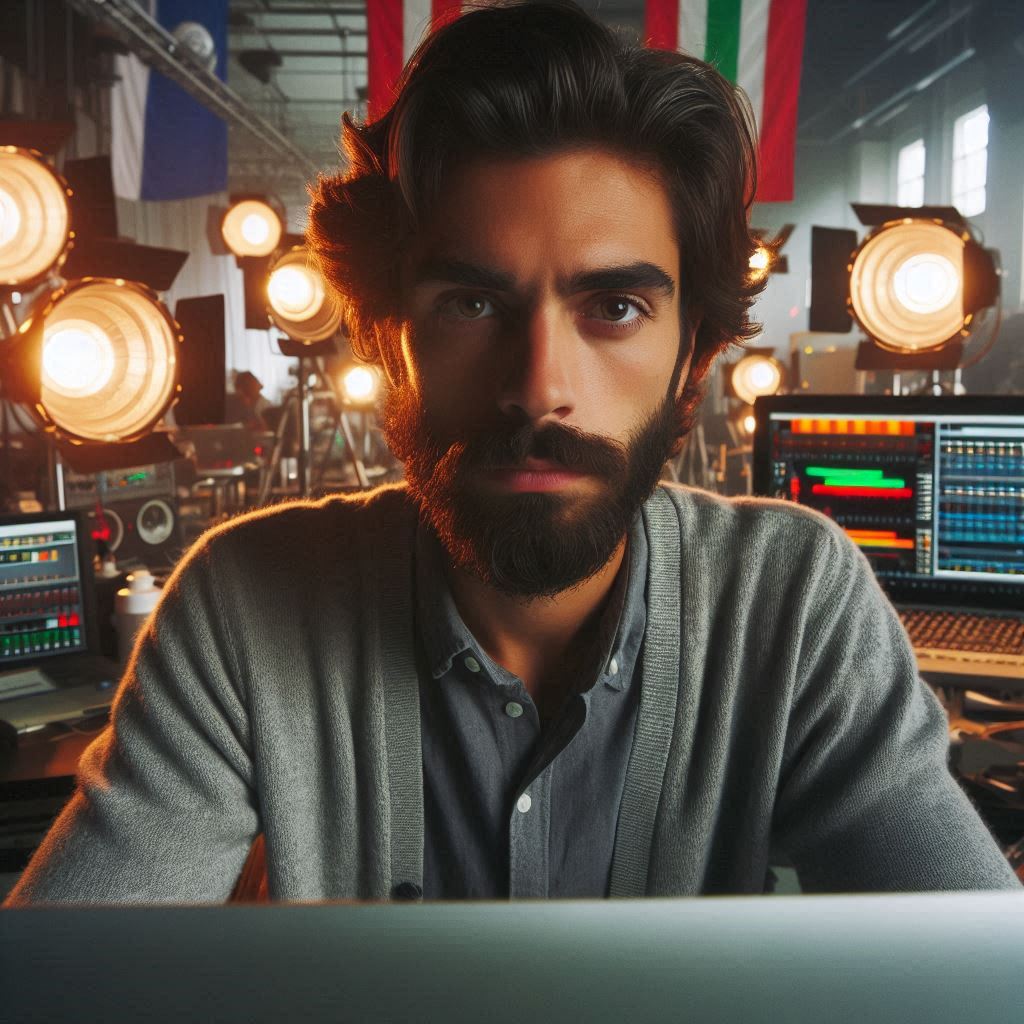Introduction
A lighting designer is a professional who creates and manages the lighting for a production or space.
They combine artistic vision and technical knowledge to enhance the mood, focus, and visual experience.
Whether in theater, film, television, or architecture, their work is crucial to the overall design.
Lighting affects the atmosphere and how people perceive an environment or scene.
Proper lighting draws attention, highlights important areas, and can evoke specific emotions.
In production, it helps tell the story, setting the tone for each moment.
Without effective lighting, even the best designs can fall flat.
It can make or break a show or space, making it an essential element in any creative project.
The role of a lighting designer is much more than placing lights.
They collaborate closely with directors, set designers, and other team members to ensure the lighting complements the entire vision.
Their job requires technical expertise in various lighting equipment and control systems.
But they also need a deep understanding of color, texture, and shadow to shape the audience’s experience.
A lighting designer starts by reading through scripts or understanding the design brief to get a feel for the project.
They discuss with the director or client to interpret the mood and message they want to convey.
Afterward, they create a detailed lighting plan, specifying light sources, positions, colors, and timing.
This plan serves as the foundation for the installation and programming of the lighting system.
Education and Training
To become a lighting designer, academic qualifications play a crucial role in shaping your career path.
Most professionals in this field have a bachelor’s degree in lighting design, electrical engineering, or a related field.
A strong foundation in subjects such as physics, mathematics, and architecture is also beneficial for aspiring lighting designers.
Specialized Training and Certifications
In addition to a formal education, obtaining specialized training and certifications can further enhance your skills and credibility.
Many lighting designers pursue professional certifications such as the Lighting Certified (LC) credential offered by the National Council on Qualifications for the Lighting Professions (NCQLP).
Attending workshops, seminars, and conferences on lighting design can provide valuable insights and networking opportunities in the industry.
Skills Required for the Profession
- Lighting designers must possess a strong understanding of lighting principles, techniques, and technologies to create effective lighting designs.
- Excellent communication skills are essential for collaborating with clients, architects, and other design professionals throughout the project.
- Creativity and artistic flair are important attributes for developing innovative lighting concepts that enhance the overall aesthetic of a space.
- Proficiency in computer-aided design (CAD) software and lighting simulation programs is crucial for designing and visualizing lighting schemes.
- Time management and organizational skills are necessary to meet project deadlines and coordinate with contractors and suppliers effectively.
- Attention to detail and a keen eye for precision are crucial for ensuring that lighting designs meet specific requirements and standards.
- Adaptability and problem-solving skills are valuable for addressing challenges and making adjustments to lighting designs during the implementation phase.
- Knowledge of lighting regulations, energy efficiency standards, and sustainability practices is important for creating environmentally-friendly lighting solutions.
Read: Visual Merchandising: Best Practices for Beginners
Responsibilities of a lighting designer
Collaborating with Directors, Set Designers, and Other Team Members
A lighting designer‘s first responsibility is to collaborate closely with the director and other key team members.
This involves aligning with the director‘s artistic vision to establish the mood and atmosphere of the production.
By working alongside set designers, they ensure that the lighting complements the set‘s physical layout and doesn‘t interfere with the visual harmony.
Costume designers also come into the conversation to ensure the lighting enhances, rather than distorts, the colors of the costumes.
The lighting designer must understand and synchronize all aspects of the production to ensure a cohesive, well-lit environment.
Creating Lighting Plots and Designs
Once the vision is clear, the lighting designer creates detailed lighting plots.
A lighting plot is a visual map that shows the placement of each light, its color, intensity, and movement.
These diagrams are crucial to guide the technical crew and ensure the lights perform as intended.
Every cue is planned with precision, from highlighting a specific moment to transitioning between scenes.
Designers must be familiar with the technical equipment and how to use it creatively.
The lighting design process involves balancing creativity with practical knowledge of lighting instruments and their capabilities.
Attending Rehearsals and Making Necessary Adjustments
The job doesn‘t end once the plot is created.
The lighting designer attends rehearsals to observe how the design functions in real-time.
They watch the performance from various angles, noting any changes or improvements needed.
Whether adjusting the intensity of a spotlight or modifying a cue‘s timing, they ensure the lighting enhances the performance without distracting the audience.
Continuous adjustments are made as the production evolves, allowing the lighting designer to refine their work.
Rehearsals are where the magic happens, bringing the lighting design to life and ensuring it works seamlessly with the rest of the production.
Read: Visual Merchandiser: Job Market and Opportunities
A typical day in the life of a lighting designer
Early morning preparations and meetings with production team
Every day, a lighting designer starts their day by preparing for the tasks ahead.
Meeting with the production team to discuss the lighting requirements for the day’s events.
Ensuring that all equipment and tools are ready for use before the start of the day.
Designing and setting up lighting equipment
The next step in a lighting designer’s day is to design the lighting scheme for the event.
Choosing the right combination of lights and colors to create the desired atmosphere.
Setting up the lighting equipment according to the design plan.
Testing and adjusting lights during rehearsals
Once the lighting equipment is set up, the designer goes through a series of tests.
Testing the lights to ensure they are working properly and producing the desired effects.
Adjusting the lights during rehearsals to perfect the lighting design for the event.
In fact, a day in the life of a lighting designer is filled with creativity, technical challenges, and collaboration with the production team.
From early morning preparations to testing and adjusting lights during rehearsals, a lighting designer plays a crucial role in bringing events to life through the power of light.
Read: Essential Skills for Aspiring Costume Designers
Challenges Faced by Lighting Designers
Being a lighting designer comes with its own set of challenges that require creativity, adaptability, and quick problem-solving skills.
Here are some common challenges faced by lighting designers:
Dealing with Last-Minute Changes in Production
One of the most challenging aspects of being a lighting designer is having to deal with last-minute changes in production.
Whether it’s a sudden shift in the script, changes in blocking, or new set pieces being added, lighting designers must be able to quickly adjust their designs to accommodate these changes.
This requires excellent communication with the rest of the production team and the ability to think on your feet.
Working Long Hours During Tech Rehearsals and Shows
Another challenge that lighting designers face is the long hours spent during tech rehearsals and shows.
Tech rehearsals can be grueling, with hours of tweaking and adjusting lights to ensure everything looks just right.
During shows, lighting designers must be on-hand to make any necessary adjustments or fixes that may arise.
This often means late nights and early mornings, all in the name of creating the perfect lighting design.
Transform Your Career Today
Unlock a personalized career strategy that drives real results. Get tailored advice and a roadmap designed just for you.
Start NowBalancing Artistic Vision with Budget Constraints
One of the biggest challenges for lighting designers is balancing their artistic vision with budget constraints.
While they may have grand ideas for the perfect lighting design, the reality is that they must work within the confines of a budget.
This can mean having to make tough decisions about where to allocate funds and how to create a stunning design while staying within budget.
It requires a delicate balance of creativity and practicality.
Despite these challenges, lighting designers continue to push the boundaries of their craft, creating stunning designs that enhance and elevate every production they work on.
Read: Collaborating with Other Creative Roles

Find Out More: Tricks for Reducing Packaging Design Costs
See Related Content: Top Colleges for Exhibition Design
Tools and Equipment Used by Lighting Designers
Lighting designers rely on a variety of tools and equipment to bring their creative visions to life.
These tools help them to manipulate light in a way that enhances the overall aesthetic of a space. Here are some of the essential tools used by lighting designers:
Various Types of Lighting Fixtures
- LED Fixtures: Energy-efficient and versatile, LED fixtures are commonly used in modern lighting designs.
- Spotlights: These fixtures are used to highlight specific areas or objects within a space.
- Floodlights: Floodlights are used to provide broad and even illumination across a large area.
- Track Lighting: Track lighting allows for adjustable lighting along a track system, providing flexibility in design.
- Chandeliers: Elegant and decorative, chandeliers are often used as focal points in interior lighting designs.
Lighting Control Systems
- Dimmers: Dimmers allow lighting designers to adjust the brightness of fixtures, creating different moods and atmospheres.
- DMX Controllers: DMX controllers are used to program and control the intensity, color, and movement of lighting fixtures.
- Smart Home Systems: Integrating lighting with smart home systems allows for remote control and automation of lighting settings.
- Sensors: Motion sensors and light sensors can be incorporated into lighting designs for energy efficiency and convenience.
- Timers: Timers can be used to schedule lighting settings to automatically turn on or off at specific times.
Software Programs for Creating Lighting Designs
- AutoCAD: AutoCAD is a popular software program used for creating 2D and 3D lighting plans and layouts.
- AGI32: AGI32 is a lighting design software that allows designers to simulate lighting scenarios in a virtual environment.
- SketchUp: SketchUp is a 3D modeling software that can be used to create realistic renderings of lighting designs.
- DIALux: DIALux is a free software program that enables lighting designers to calculate and visualize lighting designs.
- Capture: Capture is a lighting design and visualization software that allows for real-time 3D rendering of lighting setups.
Overall, lighting designers rely on a combination of technical expertise and creativity to select the right tools and equipment for each project.
By utilizing these tools effectively, they can transform a space through the power of light.
Career Opportunities and Growth in the Field
As a lighting designer, there are various career opportunities and avenues for growth in the field.
Whether you choose to work in theatre, live events, film, television, or any other industry, the possibilities are endless.
Working in Various Industries
One of the perks of being a lighting designer is the ability to work in diverse industries.
You can bring your creative flair to the stage by designing lighting for theatrical productions, musicals, and other live events.
If you prefer a more behind-the-scenes role, you can work in film and television, creating the perfect lighting ambiance for movies, TV shows, and commercials.
Each industry offers a unique set of challenges and opportunities to hone your craft.
Advancement Opportunities for Experienced Designers
For experienced lighting designers, there are ample advancement opportunities to take your career to the next level.
As you gain more experience and expertise in the field, you can transition into roles with more responsibility and creative control.
You may have the chance to become a lighting director, overseeing a team of designers and technicians to bring your vision to life.
Alternatively, you could move into teaching or mentoring roles, sharing your knowledge and passion for lighting design with the next generation of designers.
Networking and Building Relationships
Networking is an essential aspect of building a successful career as a lighting designer.
By attending industry events, conferences, and workshops, you can connect with other professionals in the field and build valuable relationships.
These connections can lead to new job opportunities, collaborations on exciting projects, and mentorship from seasoned professionals.
Building a strong network of contacts can open doors to new possibilities and help you stay current in the ever-evolving world of lighting design.
Conclusion
Lighting designers play a crucial role in shaping the atmosphere and visual impact of any space.
They are responsible for ensuring that every scene, concert, or event is visually striking and communicates the right mood.
Through a combination of creativity, technical expertise, and problem-solving, they bring life to spaces and performances.
Their work makes sure that people experience a room, stage, or artwork in its best light.
A lighting designer must consider multiple factors, including color, intensity, direction, and timing, to create a cohesive visual experience.
Their designs enhance not only the aesthetic of the space but also the functionality.
From theaters to outdoor events, from art galleries to architecture, the work of lighting designers has a transformative effect on how we perceive the world.
For aspiring professionals, lighting design is a dynamic and evolving field.
It combines art and science in exciting ways.
If you have a passion for lighting, creativity, and enjoy technical challenges, lighting design might be the right career for you.
This role allows you to express your artistic vision while working with cutting-edge technology.
It offers a perfect blend of creativity and practical problem-solving, which makes it both challenging and fulfilling.
In a world where visuals play such a crucial role, the importance of skilled lighting designers cannot be overstated.
They have the power to change how we experience performances, architecture, and events.
Their work may go unnoticed by the average person, but without it, the magic of a performance or space can be lost.




